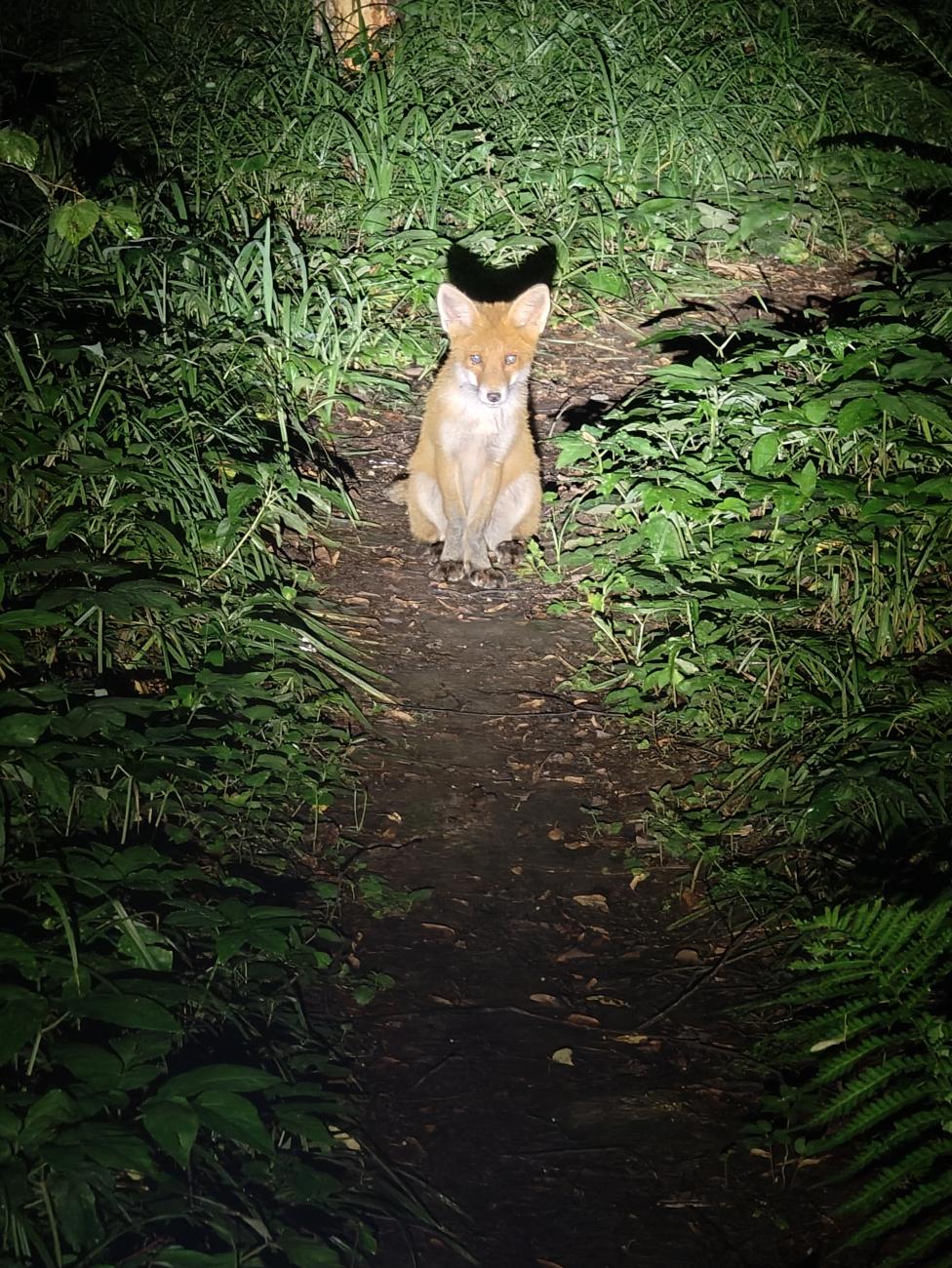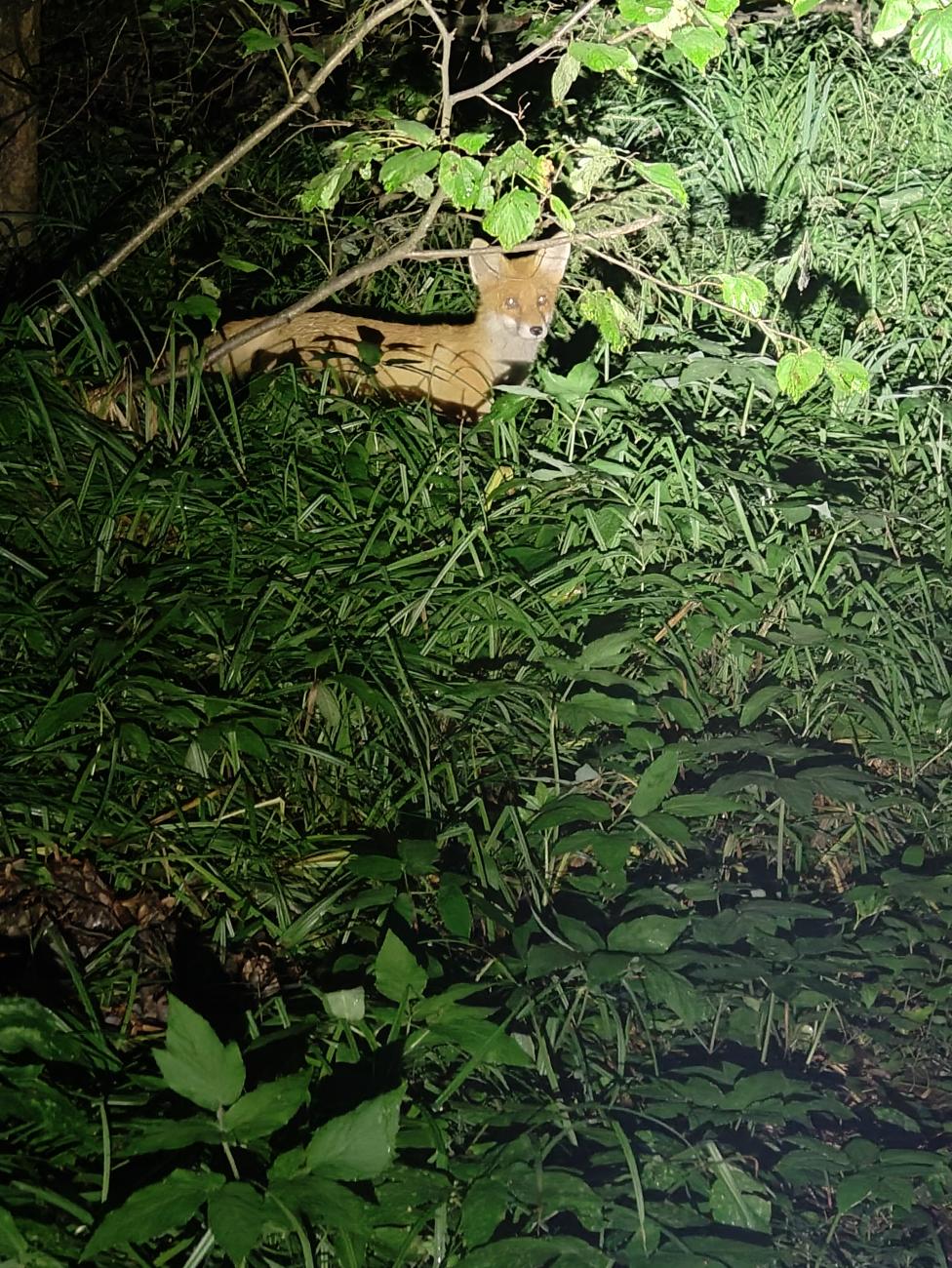
Mammals in central Russia are primarily active at night. Even those that emerge to feed during the day begin to roam longer and further as darkness approaches. This is why mammalogists at the A.N. Severtsov Institute of Ecology and Evolution of the Russian Academy of Sciences (IEE RAS) conduct not only daytime but also nighttime observations in Losiny Ostrov. During one such study, zoologists managed to photograph a fox cub. The fox was completely unafraid of people, as if specifically out for a casting call. Foxes are a common animal in Losiny Ostrov. According to censuses conducted last winter based on tracks in the snow, their numbers are second only to squirrels.
Fox cubs are usually born in mid-spring, and the mother nurses her cubs for about six weeks. A fox cub posing like this can be considered an adolescent, capable of living independently.
The fox is the largest predator in Losiny Ostrov. Large, intact forests can harbor predators larger than the fox, but within the city, an encounter with such a large predator is a unique and often dangerous event. Without predators, forest communities are incomplete, so the fox plays a significant ecological role in the urban forest.

The fox's main food source is small rodents. This year, there are plenty of them. Scientists have found that the most common rodent in our forests, the bank vole, began breeding in the winter of this frost-free year. This is unusual for the Moscow region, and is followed by a high rodent population, which is favorable not only for predatory animals but also for birds of prey.
Another behavior characteristic of foxes - they are not intimidated by the presence of humans and are often found in populated areas, including large cities like Moscow. While in rural areas, as we know from fairy tales, foxes hunted chickens, in cities they often find food in garbage dumps, as this predator's diet is extremely broad and not limited to rodents.
Foxes are easily tamed by humans, and long-term experiments in their domestication are known. But if you encounter a fox, don't try to feed or pet it. This could be dangerous. The predator could bite, and along with the bite, transmit one of the diseases that can develop in their populations. Simply take a photo, walk away quietly, and continue on your way.
